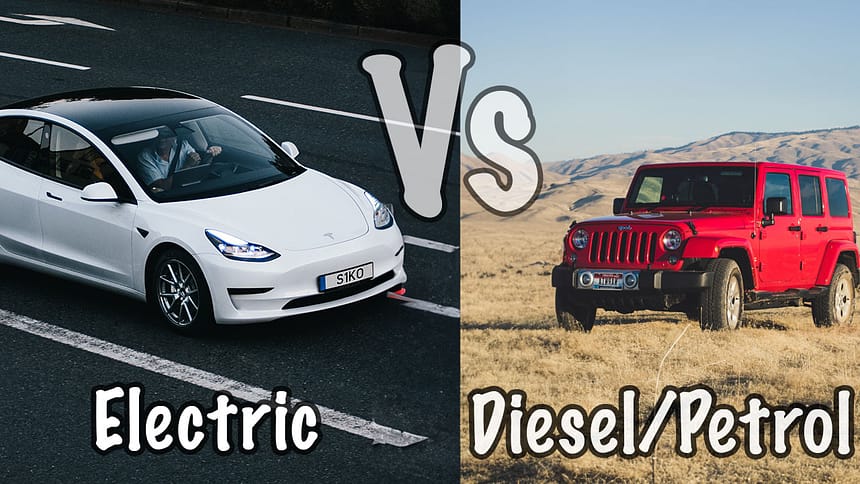The automotive industry is undergoing a transformative shift as electric vehicles (EVs) gain traction as a viable alternative to traditional internal combustion engine (ICE) vehicles. This comparative analysis explores the key differences between EVs and ICE vehicles in various aspects, shedding light on their environmental impact, performance, cost, and overall suitability for the future of transportation.
Environmental Impact
EVs: One of the primary advantages of EVs is their significantly lower carbon footprint. They produce zero tailpipe emissions, reducing greenhouse gas emissions and air pollution. However, it’s essential to consider the environmental impact of electricity generation for charging EVs, as it heavily depends on the energy sources used by the grid.
ICE Vehicles: ICE vehicles rely on fossil fuels, such as gasoline or diesel, for propulsion, leading to emissions of carbon dioxide, nitrogen oxides, and particulate matter. These emissions contribute to air pollution and climate change, making them less environmentally friendly compared to EVs.
Performance
EVs: Electric vehicles offer instant torque, providing quick acceleration and smooth, silent operation. Their regenerative braking system helps recover energy during deceleration, enhancing overall efficiency and range.
ICE Vehicles: ICE vehicles have a long history of refinement, offering a wide variety of engine types and performance levels. While some high-performance ICE vehicles can match EVs in acceleration, they cannot match the instant torque delivery and quietness of electric motors.
Range and Charging
EVs: Range anxiety, the fear of running out of charge, was a concern in the early days of EVs. However, advancements in battery technology have significantly improved EV ranges. Moreover, the growing network of charging stations makes it increasingly convenient to charge EVs on the go.
ICE Vehicles: ICE vehicles have the advantage of an extensive refueling infrastructure, allowing drivers to quickly fill up their tanks at gas stations. They offer longer driving ranges without the need for frequent refueling stops.
Cost of Ownership
EVs: While the upfront cost of purchasing an EV can be higher than an ICE vehicle, EVs tend to have lower operating and maintenance costs. They require less maintenance due to the simplicity of electric motors and fewer moving parts. Additionally, incentives and rebates in some regions can help offset the initial purchase price.
ICE Vehicles: ICE vehicles generally have a lower upfront cost, but their ongoing maintenance expenses can be higher due to the complexity of internal combustion engines and the need for regular oil changes and other maintenance tasks.
Infrastructure and Adoption
EVs: The charging infrastructure for EVs is continuously expanding, with more charging stations being installed globally. Governments and businesses are investing heavily in EV charging networks to encourage adoption.
ICE Vehicles: Gas stations are prevalent in most regions, making it easy to find refueling points for ICE vehicles. However, the reliance on fossil fuels raises concerns about energy security and environmental sustainability.
Conclusion
The comparison between electric vehicles (EVs) and internal combustion engine (ICE) vehicles reveals that EVs offer significant environmental benefits, lower operating costs, and a smoother driving experience. However, ICE vehicles still hold advantages in terms of longer driving ranges and an established refueling infrastructure. As battery technology improves and charging infrastructure continues to expand, EVs are likely to become even more competitive and appealing to a broader range of consumers. The transition to a sustainable and electrified transportation system is underway, and both EVs and ICE vehicles will coexist in the automotive landscape for some time. The choice between the two depends on individual preferences, driving habits, and considerations for environmental impact.






